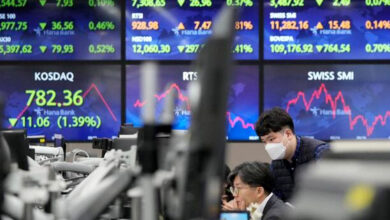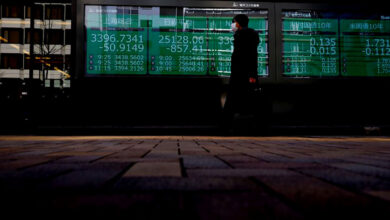As investors ponder a higher rate outlook, Asian equities remain flat and the dollar strengthens.

The U.S. dollar stayed strong on Tuesday as investors took into account the likelihood that interest rates will continue to rise for an extended period of time in many developed economies. Asian stock markets mainly stabilised after suffering significant losses over the previous 24 hours.
After American equities concluded the previous session with slight losses, MSCI’s largest index of shares outside of Japan from the Asia-Pacific region increased by 0.4%.
Prior to the Reserve Bank’s announcement, the S&P/ASX 200 index in Australia was trading higher, but it fell into negative territory after the official cash rate was increased by 25 basis points. The benchmark index decreased by almost 0.5% at the close.
Related: U.S.-China tensions and Fed worries hurt Asian stocks.
The Nikkei stock index of Japan likewise gave up early gains to decline by approximately 0.1%.
China’s blue-chip CSI300 Index was up 0.07%, and Hong Kong’s Hang Seng Index was trading 0.67% higher.
The RBA authorised a ninth straight rate increase, fulfilling expectations that it would continue its monetary tightening agenda.
Australia’s cash rate has increased to 3.35%, the highest level in ten years, and the central bank said additional increases were not out of the question.
The Euro Stoxx 50 futures for the entire region were up 0.17% at 4,218; the German DAX futures were up 0.09% at 15,409; and the FTSE futures were up 0.09% at 7,815
The S&P 500 e-mini futures in the United States were up 0.13% at 4,128.8.
Global market strategist for JPMorgan (NYSE: JPM) Asset Management, Kerry Craig, told Reuters that central banks and the latest rate hike were driving market sentiment.
Since the beginning of the year, stocks have enjoyed a solid run, so the appearance of an air pocket at this time is not entirely unexpected.
The uncertainty over interest rates is the main subject among investors during a week with little economic data from around the world.
The yield on benchmark 10-year Treasury notes hit 3.6192% during the Asian trading session, compared to a finish of 3.632% on Monday in the United States.
When compared to a U.S. close of 4.456%, the two-year yield, which rises as speculators anticipate higher Fed fund rates, reached 4.4267%.
After the United States saw significant job growth in January, when employment increased by 517,000, exceeding economists’ predictions, higher rates started to be repriced. 3.4% was the lowest unemployment rate in more than 53 years.
Investors will be paying close attention to a speech given by Federal Reserve Chairman Jerome Powell later on Tuesday at the Economic Club of Washington.
The Nasdaq Composite sank 1%, the S&P 500 lost 0.61%, and the Dow Jones Industrial Average dropped 0.1% over the course of one night on Wall Street.
The Fed Funds rate is currently expected to peak at just above 5%, and the market only expects a single rate drop of 25 basis points by the end of the year, according to ANZ economists.
Sentiment is obviously fragile and depends on data, and this new defensive position might need to last longer in the short term as risk positions are cut.
After reaching a three-week high of 132.9 during the U.S. trading session, the dollar weakened 0.28% against the yen to settle at 132.28.
Related: Asian stocks go up as fears about the Fed lessen, but India is held back by Adani.
The euro had fallen 1.13% in a month but was up 0.1% on the day at $1.0739.
The dollar index, which measures the value of the dollar against a basket of the most important trading partners’ currencies, was slightly lower than its levels during U.S. trading at 103.45. It is still significantly higher than its most recent low of 101.55 on February 3.
American crude climbed 0.86% to $74.75 a barrel. A barrel of Brent crude increased to $81.6.
Gold increased a little. The going rate for spot gold was $1873.65 per ounce. [GOL/]





